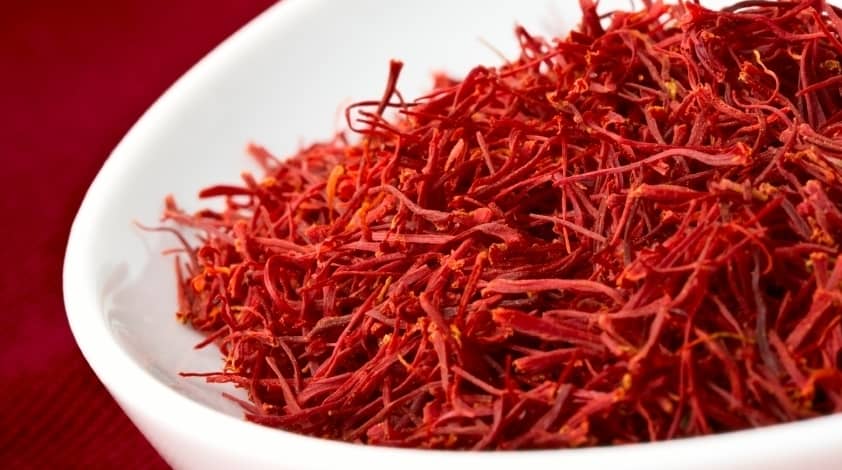For thousands of years, humans have relied on spices for their delicious flavors and beneficial benefits. Spices were a sign of wealth and luxury for ancient societies that traded them, including the Egyptians, Greeks, and Romans. The medicinal, spiritual, and monetary uses for spices are numerous. Spices have risen to prominence in modern global cuisine, playing a crucial role in elevating the flavor and complexity of meals everywhere. The cultural importance of the most costly spices in the world will be discussed in this blog.

Saffron
One of the most expensive spices is ( Saffron Threads ) , which comes from the crocus flower. Saffron is used in a broad variety of recipes, from biryanis to paellas, thanks to its characteristic scent, flavor, and golden tint. Saffron is harvested by hand, and the blossoms must be treated meticulously before the spice can be extracted. Due to its exorbitant cost, saffron has long been a symbol of wealth and elegance, making it a highly sought-after component in both classic and cutting-edge dishes.
Vanilla
The pods of the vanilla orchid are where you’ll find the delicious and fragrant spice known as vanilla. It has several applications, including baking, perfumery, and aromatherapy. Vanilla beans get their distinctive flavor and scent through a lengthy curing process that begins with careful hand pollination. Therefore, pure vanilla is one of the world’s most expensive spices, and the widespread usage of synthetic vanilla flavoring is a direct result of the exorbitant cost of the real thing. However, many cooks and foodies stick to using real vanilla extract.
Cardamom
Cardamom can be used in a wide variety of ways and has been around since ancient times. Its distinctive spicy-sweet flavor makes it a versatile addition to both sweet and savory meals. Cardamom is a popular spice that is used to enhance the flavor of beverages like coffee and tea in the Middle Eastern, Indian, and Scandinavian culinary traditions. The spice is made from the seeds of an Indian plant that is now widely cultivated elsewhere. It has a powerful scent and many beneficial uses.
Cinnamon
Throughout the world, cinnamon is utilized in many different dishes. Its sweet, pleasantly spicy flavor makes it a popular ingredient in both sweet and savory meals. The anti-inflammatory and antioxidant effects of cinnamon, as well as its potential to reduce blood sugar and cholesterol, are also highly prized. Cinnamon comes from the inner bark of trees in the Cinnamomum family, and there are many different kinds, each with its own distinct flavor and perfume.
Cloves
Cloves are fragrant spices that have been used both medicinally and in cooking for centuries. Cloves have a powerful, sugary, and slightly bitter taste; they are made from the dried flower buds of the clove tree. Cloves are a frequent ingredient in many Asian and Middle Eastern dishes. Their anti-inflammatory, antimicrobial, and digestive enhancing properties are only a few of their many values. For millennia, people have turned to cloves as a safe and effective cure for everything from toothache to stomach aches.
Nutmeg
Nutmeg is a cozy and subtly sweet spice frequently used in wintertime treats. The nutmeg tree, originally from Indonesia but now cultivated all over the world, is the source of this spice. There are many savory applications for nutmeg, especially in Indian and Middle Eastern cooking. The spice has long been recognized for its ability to alleviate stress and sleeplessness. However, nutmeg is poisonous in big doses and can lead to hallucinations.
Mace
Mace, like its more well-known relative nutmeg, is highly prized for its subtle taste and aroma but is often less well-known. It shares the same warm and somewhat sweet flavor of nutmeg, as it is formed from the same reddish outer covering of the nutmeg seed. Mace is a common ingredient in European and Middle Eastern baked items, sauces, and meat meals. Traditional medicine relies on the spice for the treatment of gastrointestinal and respiratory disorders. Mace, like nutmeg, should be used sparingly because it is poisonous in big doses and can lead to hallucinations.
Pepper, Black
Black pepper is the most popular spice in the world, and its versatility in the kitchen is astounding. Originating in India, pepper is now widely cultivated around the world and harvested for its dried fruit. Black pepper’s peppery and savory flavour makes it a popular addition to spice mixes and marinades. Black pepper comes in many different types, each with its own distinct flavor and aroma.
Conclusion
For thousands of years, people have relied on Spices and Seasonings for their culinary and, in some cases, therapeutic benefits. Saffron, vanilla, cardamom, cinnamon, cloves, nutmeg, and mace are among the most costly spices in the world because of the unique and complex flavors they add to a wide range of dishes. Despite the fact that their high costs prevent many people from enjoying them, these spices maintain their cultural and culinary significance. Their continued use is a reflection of how flavor and tradition are valued in kitchens around the world. Read More Articles!
